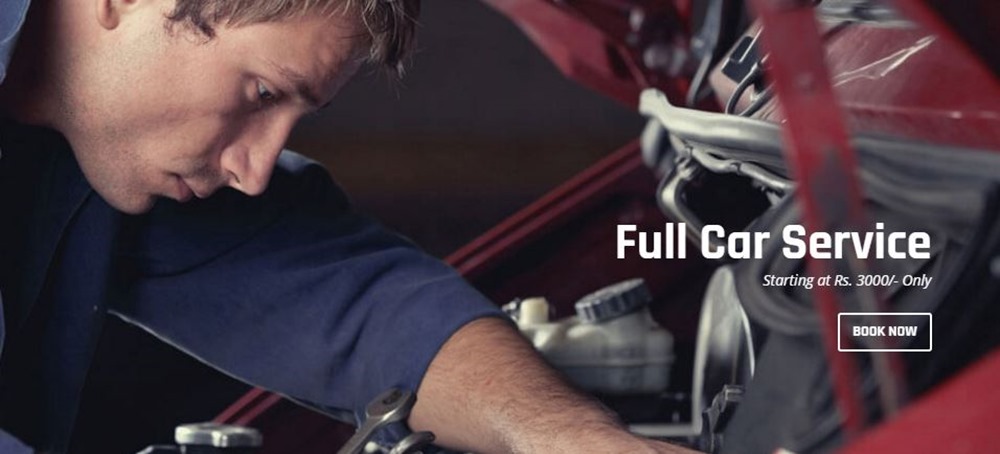How Car Services & Repair Market is Changing With Use of Modern Technology & Business Practices
Over the past few years, the Indian Market has witnessed a series of e-commerce/ marketplace/ listing/ aggregation based start-ups. These businesses have changed the consumers’ mindset and spending patterns across various B2C sectors. With consumers’ evolution, we all have observed the rise of giants in retail e-commerce, apparel, food tech, online payments, cab/travel aggregators and the likes.
However, in recent times we have also seen the stagnation or decline of some of the large companies in these sectors. Most argue the reasons for stagnation of giants, and death of newbies, to be the result of either fund exhaustion (caused by unsustainable unit economics and inability to reduce costs), slowly becoming an invalid product-market fit, or being in a highly competitive space.
Piggybacking on attributes like high technology adoption, ease in government norms, consumers wanting a hassle-free lifestyle and their increased spending capability; all these start-ups had to focus on was to promote high discounts and value added services. In the process, they have unknowingly paved the way for their international counterparts to penetrate the Indian Market and are now losing to them because of their deeper pockets.
However, the ecosystem is evolving, with start-ups focusing on good quality and better services against the initial strategy of providing high discounts which were fuelled by investor’s money. But the concern still remains – “What if apart from all these factors there was something innate which has been missed?”
Something which would validate the existence of intermediaries in the first place. Overall one fact that has clearly emerged is that the delivery of underlying core product/ service and the unit economics are utmost important for the successful marriage of modern technology and a traditional sector.
A car is the second biggest investment in an average Indian’s lifetime (house being the first), and, being a depreciating asset, it requires more frequent and costly maintenance. Traditionally, a car owner has three options – an OEM authorized service centre, a Multi-brand service centre or a local unbranded workshop.
At an authorized service centre, the consumer is never confident of rates (and actual requirement) of a service or repair.
At a local garage, the same consumer is skeptical about the quality of service. In short, there is no real ‘work discovery’ and ‘price discovery’ for the consumer in this sector. Apart from individual car owners, the needs of large fleet owners/aggregators and other B2B players also remains largely unaddressed. These cars require more frequent servicing as compared to their individually-owned counterparts owing to greater running, however no comprehensive solution exists to satisfy this need in the present market.
With growing distrust in the after sales car service market, there exists a need for a new business model which can fill the void by providing Price Discovery and Quality Assurance, both at the same time.
Recently, a new breed of players has cropped up in the auto servicing space, in a bid to address consumer concerns. These players range from mere listing services to horizontal hyperlocal service providers, and finally specialized entities with a strong vertical focus on car repair and maintenance.
The emergence of doorstep service providers has also impacted the way service transactions are executed. The advent of these entrants is expected to take the sting out of getting a car serviced, with access to better quality services at transparent rates.
While this concept is still evolving in India, new age technology companies in auto services sector in China are more evolved, with players like Tuhu already recording close to USD 50 Million in sales. China’s overall automobile after-sales market exceeds USD 120 Billion, driven by its ageing car fleet and rising second hand car market. India is expected to follow suit, given increasing income levels, growth in second hand car sales and rising adoption of technology.
In India, the after sales car service market currently stands at USD 10 Billion and with the increase in spending power of Indian consumers, it will continue to grow. FY 2015-16 witnessed the highest sale of passenger vehicles in the past 5 years (source siamindia.com) and all these cars will join the after sales market when they run out of free service coupons in a year or two.
Owing to the vast market size and fear of losing market share, the OEMs have recently started to acknowledge the importance of after sales services. Still, about 65% of the sector remains unorganized.
Evidently, car services & related ecosystem is one of the largest untapped sectors at present in India, awaiting the fruits of modern technology and business practices.
About the Author: Kanishka Garg is Cofounder & COO at ZONNETT, a mobile app for all your car servicing requirements


“Evidently, car services & related ecosystem is one of the largest untapped sectors at present in India, awaiting the fruits of modern technology and business practices.” – Rightly said…
As we’ve progressed while working with Carpathy, we have solved most of the problems associated with this highly unorganized sector and technology plays an important roll in solving the interaction between the customer and us.
Customers are taking a leap of faith by trusting us with their car and trying to upsell or delaying in delivery or doing work without approval from the customer and then charging extra is the worst things that you can do.
So, we ensure that no work gets done without the customer’s approval and we only recommend what’s needed basis inspection of the car. We are working hard towards building our interface and would love feedback so that we can improve a whole lot more.